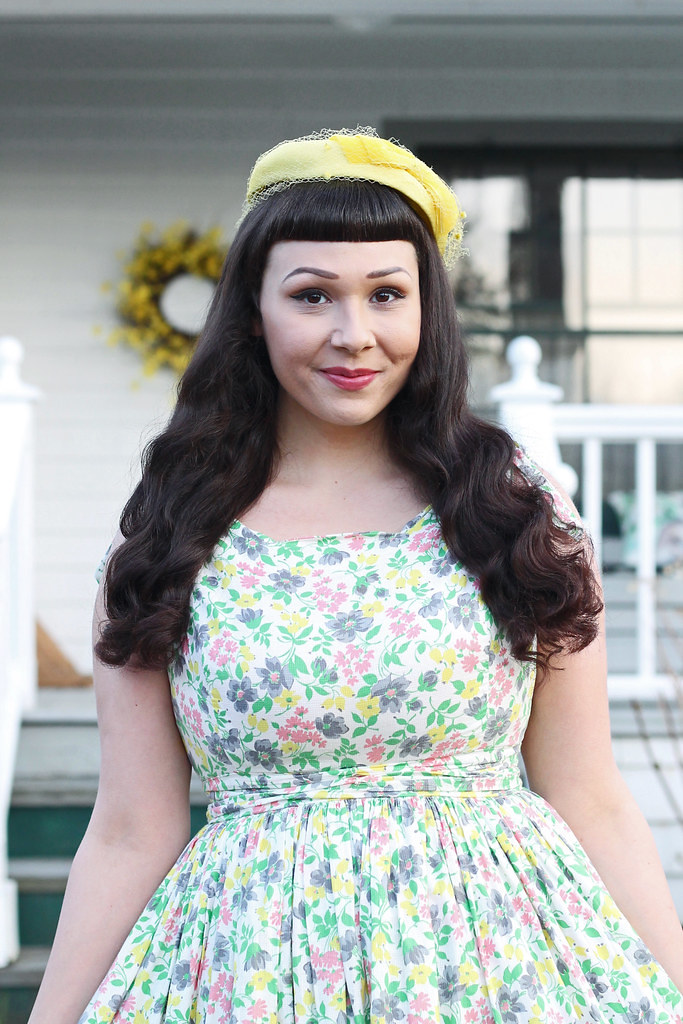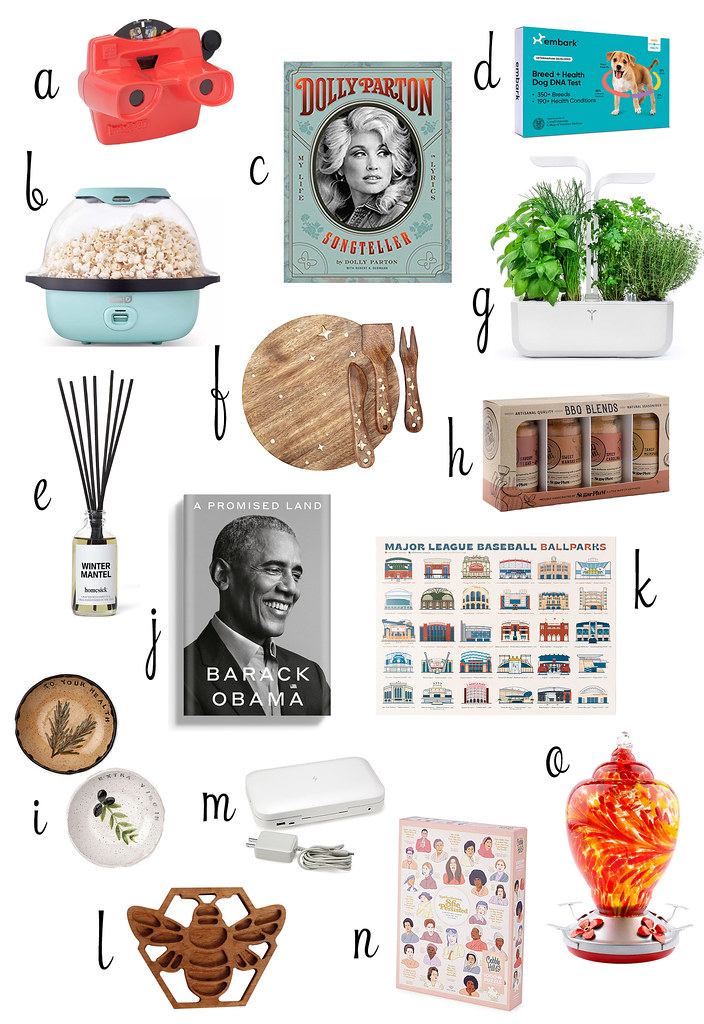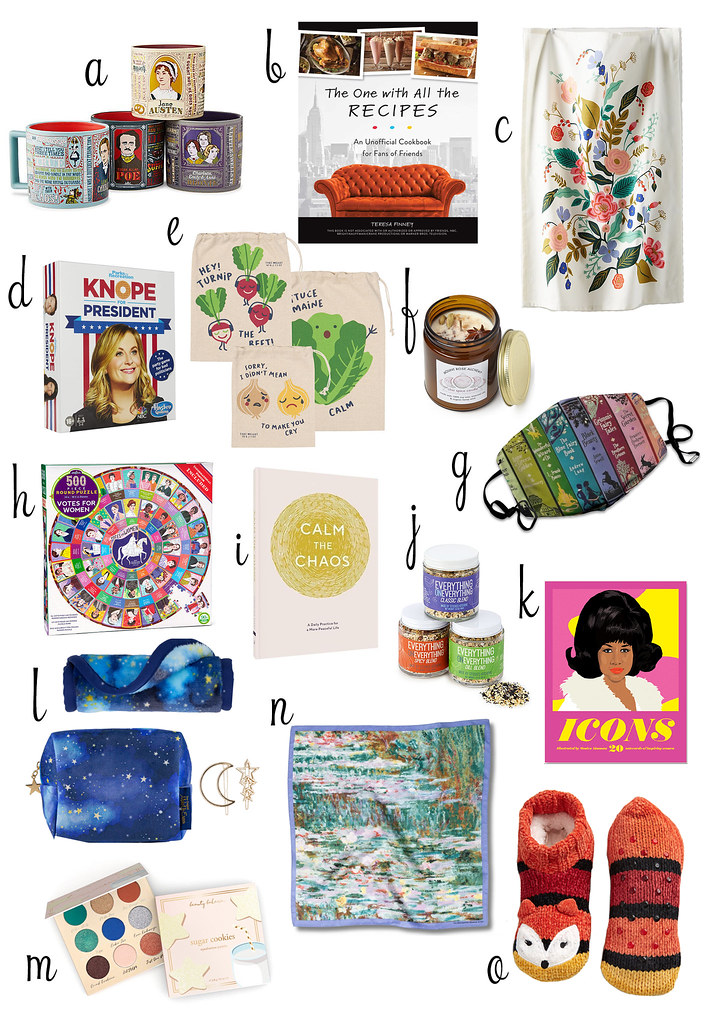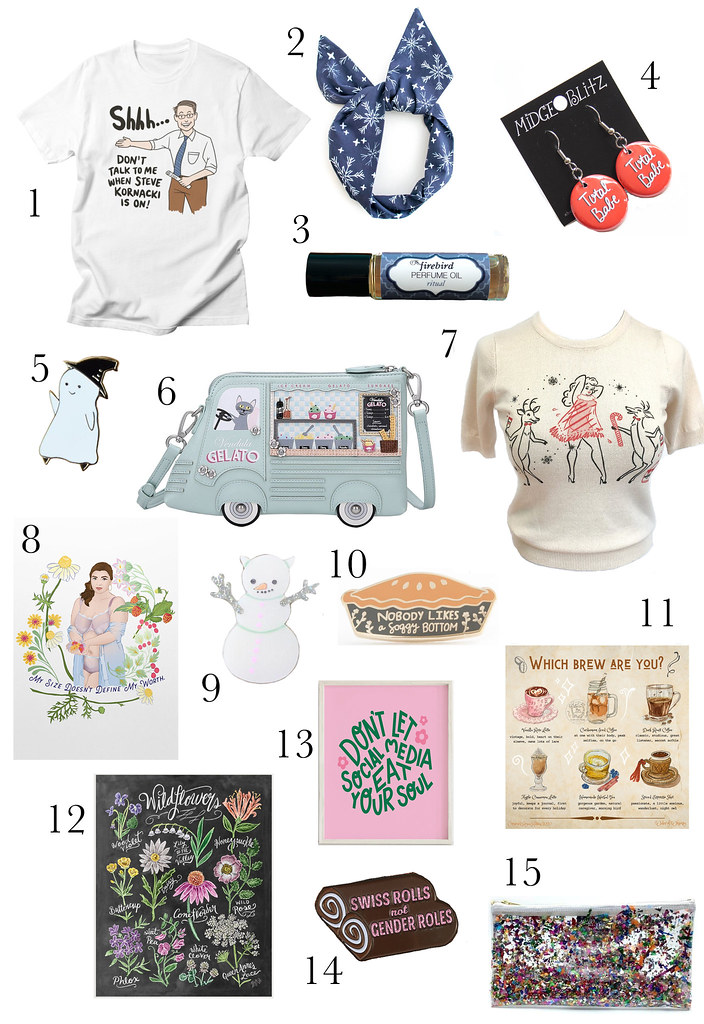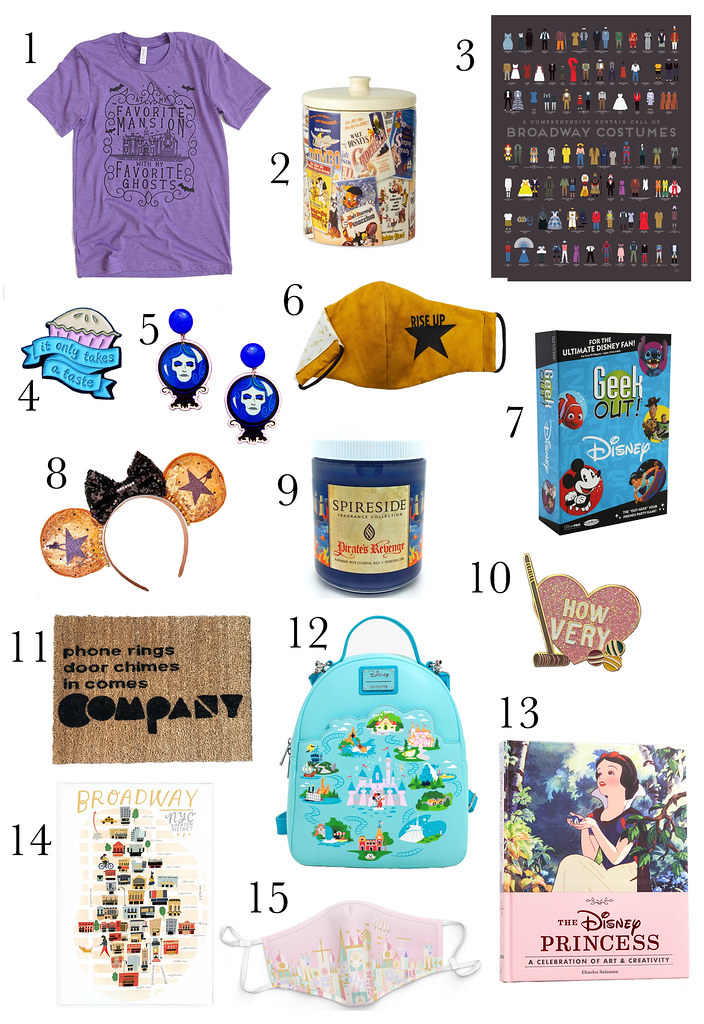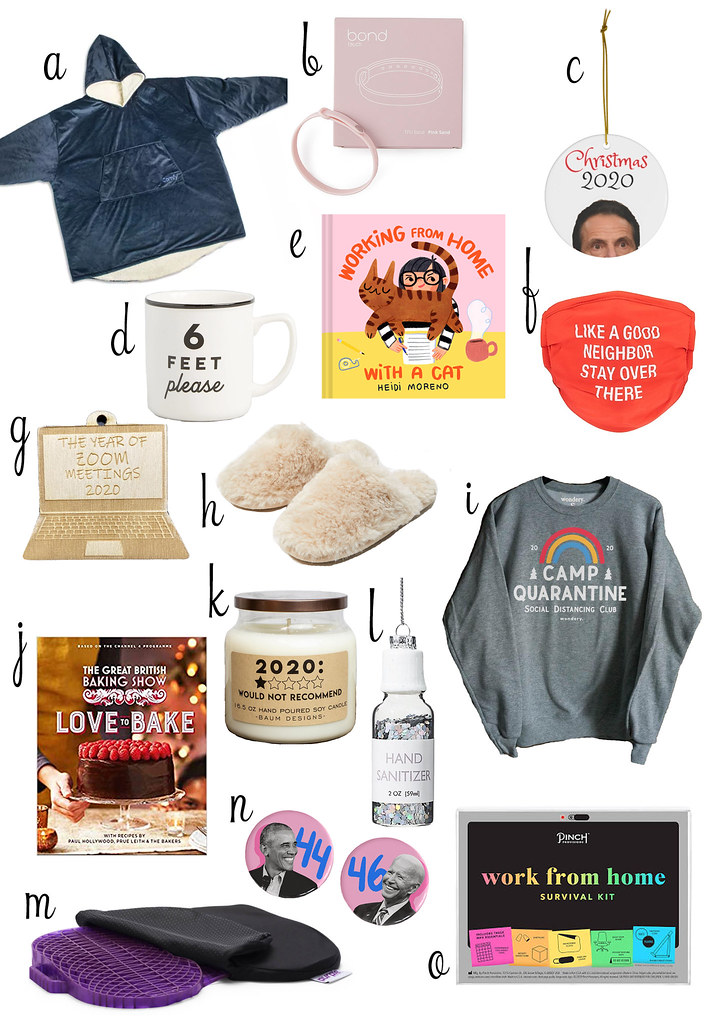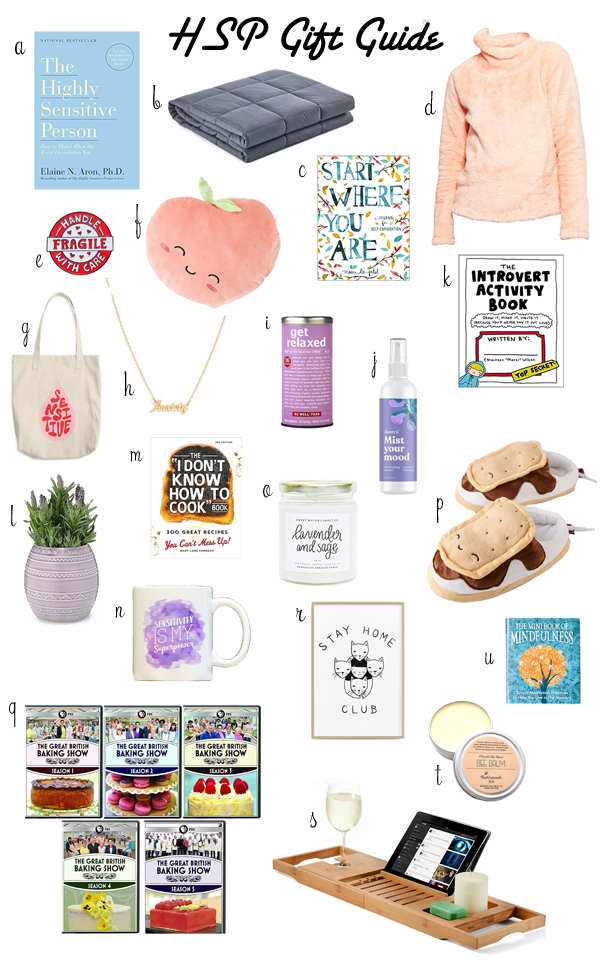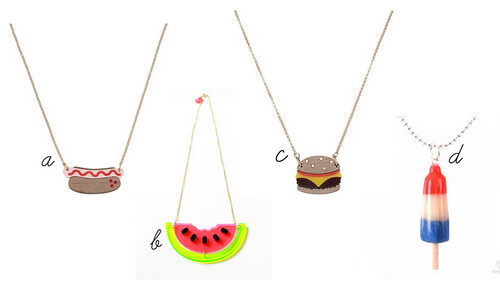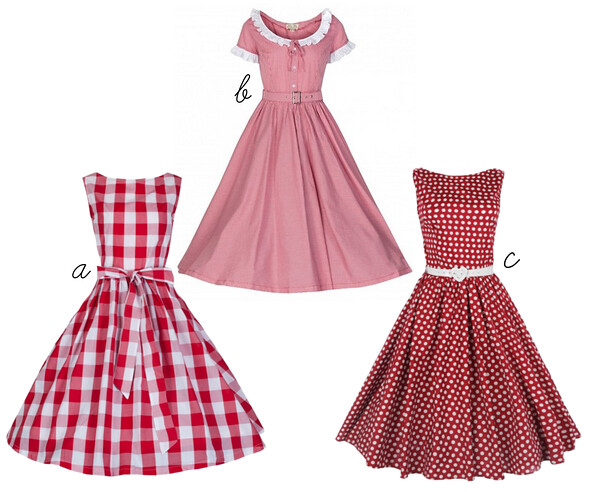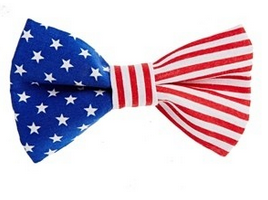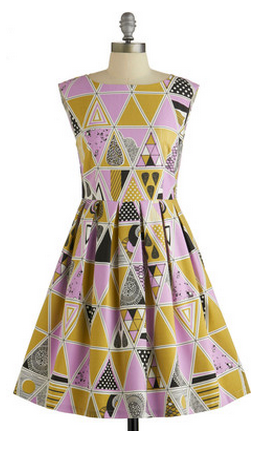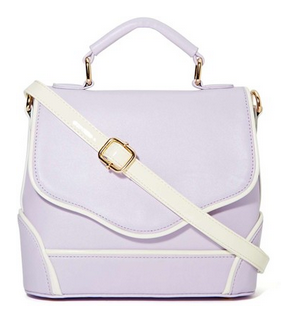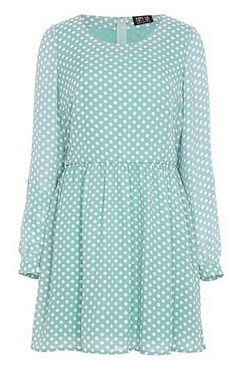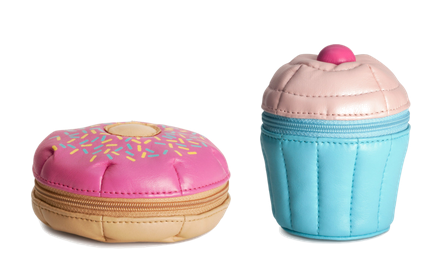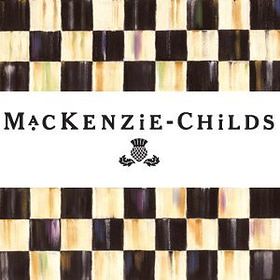Etiquette For Vintage Sellers
- List (Accurate!) Measurements: This is the number one comment I heard from everyone who weighed in on Instagram and it's crucial when you're selling vintage online. A size estimate (S/M/L) or dress size (especially a vintage one!) isn't going to suffice for most buyers. I will absolutely skip right over listings that don't include measurements because it's too hard to guarantee accuracy. I've seen dresses with a 28" waist be classified as anything from a small to an XL, depending on the seller. I've also seen sellers who go by the number on the tag, which simply doesn't correlate to modern sizing. At a minimum, sellers should provide the bust, waist, and hip measurements for a garment, as well as some kind of length (either total or from the waist). If you're going to correlate those measurements to a modern-day size, make sure that it's as standardized as possible (e.g., no vanity sizing). Make sure to specify whether you're including flat measurements or if the measurement has been doubled, too!
- Inspect and Disclose Any Damage: Another one of the most popular responses I received on Instagram is that sellers should make every effort to inspect their garments carefully and disclose any flaws, no matter how small. Everyone is human and small pinholes or stains can be easy to miss. However, most people view the job of a vintage seller as making sure that their listings reflect the piece's true condition. As such, make sure to note any possible fading, pilling, staining, or evidence of previous alterations. Many buyers will be happy to purchase an imperfect dress that's in wearable condition as long as the seller has disclosed any flaws they see. But if they receive an order and it doesn't reflect the information in the listing, you'll have an unhappy customer on your hands.
- Include Accurate Product Photos: When buying vintage online, buyers already know they're taking a bit of a chance. But no one wants to gamble on a piece with poor-quality photos (or, worse yet, only one photo). Although platforms like Poshmark are full of listings with not-so-great images, it's beneficial for vintage sellers to take product photos in good lighting and with the product on a model or on a mannequin. Flat lays and hanger shots aren't ideal, but it's great to have a variety of different shots. Make sure to color-correct for accuracy without going overboard. If you boost the saturation to make garments look thicker or richer in color than they really are, buyers will probably be disappointed. Every effort should be made to include photos that are true to life.
- Provide Lots of Detail: It's generally recommended that vintage sellers provide as much detail as possible (even beyond signs of damage) in their listings. This is for a couple of different reasons. For one, it can alleviate questions from prospective buyers and make sure everyone has the information they need from the start. Secondly, it can potentially protect you in the event that a buyer files a claim later on. If you can prove that you did your due diligence and that you provided accurate information to a buyer, you'll have a better chance of winning if a claim is filed against you. Plus, you can position yourself as a truly knowledgeable seller that buyers can trust.
- Always Be Honest: If a buyer does message you for information that isn't in the listing, be forthcoming. For example, don't mislead a customer to believe that a dress will fit them if you know the fabric doesn't provide stretch. You don't have to definitively say whether a piece will fit someone's body or not, but don't lie just to make a sale. The same goes for "80s-does-50s" style pieces. Both decades are technically considered to be vintage at this point, but make sure the garment is labeled accurately. Calling it a 1950's dress might be better for SEO purposes, but it's not accurate. If you don't have enough knowledge to provide the info a buyer is looking for, tell them that! It's okay not to know. But it's not okay to claim something that might not be true.
- List Your Price Upfront: This might be a bit controversial for some sellers, but many buyers I've talked to really take issue with the practice of being secretive about pricing. This applies mainly to Instagram sellers, but it could be applicable to other vintage sellers, too. While it's fine to ask buyers to make an offer for an item, asking people to "DM for pricing" scares many buyers off. It can also allow a seller to create a secret bidding war, which can really be a turn-off. If you're looking to sell an item you know will go for a lot and you don't want to settle, consider taking your listing to eBay. And if you're willing to accept an offer before an item is listed, make that clear in your post.
- Don't Buy Just to Resell: Okay, hear me out. I realize that this is a common practice and that sellers have to acquire their clothing from somewhere. HOWEVER. The vintage community is pretty small. Sellers tend to follow each other and buyers will follow a lot of different shops. Because of that, it tends to be pretty obvious when a seller buys a piece from a lesser-known seller and turns around to sell it immediately for a huge price increase. It's one thing if you buy a piece for your personal use and it just doesn't work out. But to swoop in on the sale only to drastically increase the sales price in order to make a major profit is just plain shady. It also ends up driving prices up for everyone. While it's great that many sellers have large followings and can make a great living from selling vintage, buyers tend to know when one seller has taken advantage of another. It might not bother some sellers, but it definitely bothers me.
Vintage Clothing Tips for Buyers
- Know Your Measurements: This is my top tip (and the mirror image to the first tip under the sellers section) for anyone who wants to buy second-hand clothing. You need to know your measurements! Sizes have changed so much over the years and you can't always trust an estimated size that a seller assigns to an item. Whether you're buying in-person or online, knowing at least your bust and waist measurements can keep you from being disappointed after you purchase. You can use a tape measure on yourself or on a clothing item you already own. But remember that vintage garments made before the 1970s or so wouldn't have had much stretch – so measure carefully and err on giving yourself a little bit of breathing room! If you're buying in person, bringing your tape measure along can let you know whether you should try the garment on or skip it. Remember: if you rip it, you buy it!
- Buy Your Size: At first glance, this might seem redundant. But this is about more than knowing your measurements. As someone who could be classified as "mid-size" or on the larger end of straight sizing, I know how hard it is to find affordable vintage in my size. It's much more difficult for plus-sized folks. For whatever reason, vintage in extra-small and small size ranges are much more plentiful. So if you wear those sizes, please don't buy a much larger size with the intention of wearing an oversized look or having the garment altered! When you have thin privilege, you can take advantage of the plethora of vintage clothing that's already at your disposal. Unless you're buying for a theatre production or for a friend, I would suggest refraining from buying any vintage items that are more than a few inches larger than what you'd normally wear. A lot of people see buying to alter as a crime against vintage; not only would you be doing a disservice to other vintage lovers, but you could also damage the piece during the alteration process. The exception here is if it's a piece that you already own and love. But if you can bear the thought of setting it free, it can find a new home with someone who will love and wear it as it is – and you can find something you like even more.
- Read Descriptions and Ask Questions: One pet peeve of many vintage sellers is buyers who fail to read product descriptions or ask questions before buying. When a seller puts in all the work to create a detailed description and it becomes clear that the buyer hasn't bothered to read it, it's no wonder that they might take offense. While most are more than happy to answer any questions you may have, you'll need to take that step before you purchase. Most vintage transactions really don't allow for buyer's remorse. Some sellers do have return policies in place, but you shouldn't expect to be able to return a vintage item if the issue is on the buyer's end. As a rule, always check before you check out!
- Don't Make Your Budget the Seller's Problem: Believe me, I understand that the high price of true vintage makes this style of dress inaccessible for many people. My own collection of vintage items is relatively small for this reason (and also because my size is harder to find!). But that doesn't okay to beg the seller to lower their price or to send them a low-ball offer. The seller has the right to set their price as they see fit; you should assume that they've done their research, have determined what the market will allow, and have priced the item accordingly. You may not like the price, but unless the seller has explicitly said that they're open to offers or you're negotiating at a flea market, you should assume that the price is as marked. It never hurts to ask if the price is flexible, but it's rude to imply that the seller should lower their price because it's out of your budget. If it's out of your price range, move on and try to find something that's more budget-friendly.
- Be Careful About Unsolicited Messages: Of course, it's fine (and encouraged!) to message a seller about a piece they're selling. But it's a bit invasive to message someone to ask if they're willing to sell something from their personal wardrobe. I understand the "nothing ventured, nothing gained" mentality. But I've frequently been on the receiving end of emails, DMs, and Facebook messages from people who ask to buy pieces they've seen me wear on my blog or on social media... and I don't think I've ever agreed to sell what they're asking for. Most sellers (even non-vintage sellers like me!) have online storefronts for a good reason. If we're ready to sell something, it will be listed there. When I'm on the hunt for a specific piece, I watch resale sites like a hawk. I would never even think about messaging someone I don't know to see if I can buy a random item from their closet. Some people have even asked me to promise to let them know if I do decide to sell something. Unfortunately, I can't remember everyone who has messaged me about an item over the years – and besides, the request feels pretty presumptuous. Instead, I'd recommend following a seller's Poshmark, Depop, eBay account, or website. You could also message a vintage or second-hand seller to see if they might be able to source something similar to what you're looking for!
- Write a Review: Showing your support for a small business can have a big impact. Whether it's on Etsy, Poshmark, or another platform, you should make it a point to leave a review for a seller if you've had a great experience with them. Most people are actually more inclined to trust sellers with a few negative reviews mixed in than sellers with no reviews at all. Anything you can do to boost the seller's brand perception will be appreciated. On the other end of the spectrum, it's a good rule to think before leaving a negative review. That's not to say that you shouldn't let other buyers know about a bad experience. You absolutely should! But if the problem comes down to a misunderstanding or is something you can resolve with the seller directly, try that first! (The same goes for filing any kind of payment claim against a seller.) Think about what you'd find most helpful as a buyer and include that in your review – and don't leave them only when you've had a poor experience!





